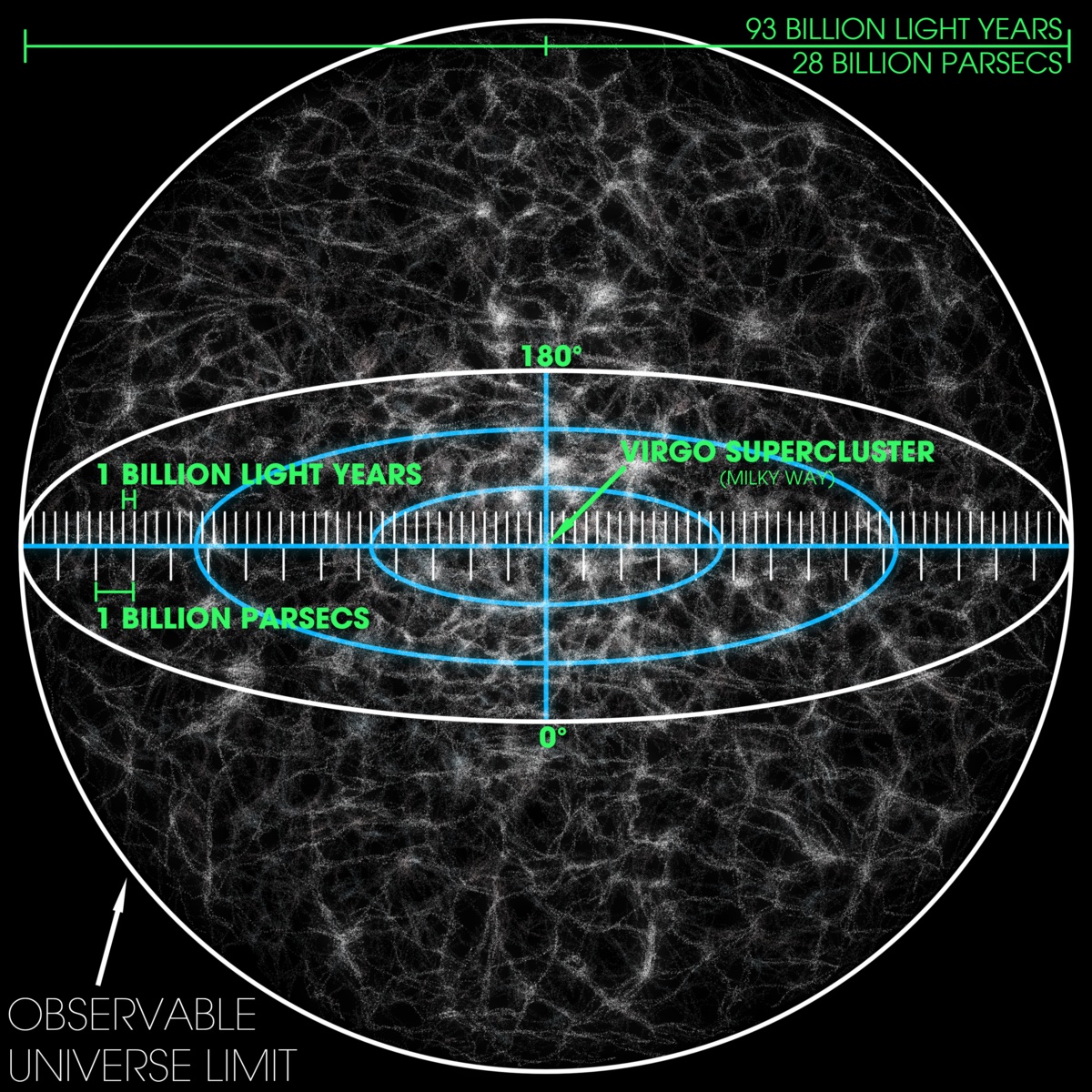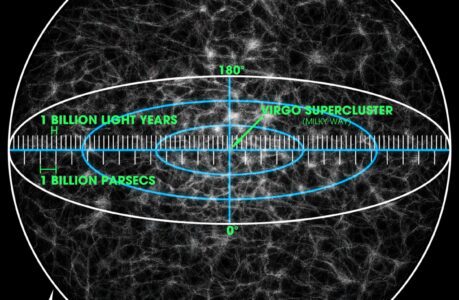Unlocking the Secrets of the Universe: A Journey through the Methods and Tools of Cosmic Distance Measurement
Introduction
Astronomy, the timeless pursuit of understanding the cosmos, has led humanity to some of its most profound discoveries. From the depths of our solar system to the farthest reaches of the observable universe, astronomers have been captivated by the vastness of space. However, to truly grasp the scale of the universe and explore its mysteries, one fundamental question must be answered: How do astronomers measure distances in space? In this article, we embark on a journey through the cosmos, uncovering the methods and tools that astronomers employ to unveil the secrets of the universe.
The Cosmic Yardstick: A Fundamental Challenge
Before delving into the intricacies of distance measurement in space, it’s crucial to comprehend the sheer enormity of the cosmic stage. The universe is a vast expanse, with galaxies separated by billions of light-years and stars scattered across the night sky. To navigate this cosmic wilderness, astronomers need a reliable yardstick—a means to quantify these vast distances accurately.
1. The Parallax Effect: Triangulating the Stars
Measuring Distances in Our Cosmic Neighborhood
Our cosmic journey begins with a technique called stellar parallax. This method is like using the Earth itself as a ruler to measure the distances to nearby stars. Imagine holding your finger in front of your eyes and blinking; you’ll notice that your finger appears to shift position relative to the background. This apparent shift is due to the slight change in your viewing angle, and astronomers use a similar concept to measure stellar distances.
In the 19th century, astronomers began employing parallax to gauge the distances to stars within our Milky Way galaxy. This technique relies on observing a star’s apparent shift against the backdrop of more distant stars as the Earth orbits the Sun. The greater the shift, the closer the star is to us.
- For more information on the parallax effect, you can read this article from NASA.
2. Standard Candles: Measuring Cosmic Distances Beyond Parallax
Unlocking the Secrets of Distant Galaxies
While stellar parallax is effective for measuring the distances to nearby stars, it becomes less practical for objects farther away. This is where the concept of “standard candles” comes into play. Standard candles are objects in space with a known and consistent luminosity, making them reliable distance markers.
One such standard candle is the Cepheid variable star. Cepheids have a unique property—their brightness fluctuates in a predictable manner. By observing the period of these fluctuations and comparing it to their apparent brightness, astronomers can accurately determine their distance. This method has been instrumental in measuring distances to galaxies beyond our Milky Way.
- To explore the role of Cepheid variable stars in cosmic distance measurement, check out this research paper from the European Space Agency.
3. Redshift and the Expanding Universe: Beyond Our Cosmic Backyard
Unraveling the Cosmic Expansion
As we venture deeper into the universe, the parallax effect and standard candles become insufficient for measuring vast cosmic distances. Instead, astronomers turn to the phenomenon of redshift, which reveals the universe’s ongoing expansion.
Redshift occurs when an object in space is moving away from an observer. This motion causes the wavelengths of light emitted by the object to stretch, shifting them toward the longer, redder end of the spectrum. The extent of this redshift provides a vital clue to the object’s distance and velocity.
In 1929, Edwin Hubble made a groundbreaking discovery using redshift data. He observed that galaxies were receding from us, and the more distant a galaxy, the greater its redshift. This led to the formulation of Hubble’s Law, a foundational principle in cosmology that links redshift to cosmic expansion.
- For a deeper understanding of redshift and its implications, refer to this article by the European Southern Observatory.
4. Cosmic Microwave Background: A Snapshot of the Early Universe
Traveling Back in Time
As we continue our cosmic journey, we encounter another remarkable tool for measuring the vast distances of space—the Cosmic Microwave Background (CMB). This faint, ubiquitous glow is a relic from the universe’s infancy, a snapshot of the cosmos just 380,000 years after the Big Bang.
The CMB is a treasure trove of information for astronomers. It provides crucial insights into the early universe’s density, composition, and temperature variations. By studying these subtle fluctuations, scientists can unravel the mysteries of cosmic evolution and the vast cosmic web that connects galaxies across billions of light-years.
- Explore the significance of the Cosmic Microwave Background in this article from the Planck Collaboration.
5. Supernovae: Cosmic Explosions as Distance Beacons
The Brilliant Deaths of Massive Stars
Supernovae, the explosive deaths of massive stars, are among the most dramatic events in the universe. These cataclysmic outbursts release immense amounts of energy, making them visible across vast cosmic distances. Astronomers have harnessed the power of supernovae to measure distances to galaxies far beyond our Milky Way.
One specific type of supernova, known as a Type Ia supernova, plays a pivotal role in cosmic distance measurement. These explosions are incredibly consistent in their luminosity, making them reliable standard candles. By observing the apparent brightness of Type Ia supernovae in distant galaxies, astronomers can accurately calculate the galaxies’ distances.
- Delve into the world of supernovae and their role in cosmology through this article from the Harvard-Smithsonian Center for Astrophysics.
6. The Great Cosmic Web: Uniting Galaxies Across the Universe
Mapping the Universe’s Largest Structures
As we venture further into the universe, we encounter an astonishing realization—the cosmos is not a random scattering of galaxies but a vast, interconnected web. This structure, known as the Cosmic Web, is a complex network of filaments and clusters of galaxies spanning billions of light-years.
To understand the scale of this cosmic architecture, astronomers employ techniques like gravitational lensing and galaxy surveys. Gravitational lensing occurs when the gravitational pull of massive objects, such as galaxy clusters, bends and magnifies the light from more distant objects. By studying this lensing effect, scientists can map the distribution of matter in the universe and measure cosmic distances.
- Dive into the study of the Cosmic Web and gravitational lensing in this publication from the Space Telescope Science Institute.
7. Cosmic Rulers: Baryon Acoustic Oscillations
Tracing the Echoes of the Early Universe
Baryon Acoustic Oscillations (BAOs) are another remarkable tool in the astronomer’s kit for measuring cosmic distances. These subtle imprints in the distribution of matter throughout the universe harken back to the universe’s infancy, just moments after the Big Bang.
BAOs are like cosmic rulers, leaving a distinct signature in the large-scale structure of the universe. By studying the clustering of galaxies and the cosmic microwave background, astronomers can detect these oscillations. The scale of BAOs provides a standard ruler for measuring cosmic distances, allowing scientists to probe the universe’s expansion history.
- For a detailed exploration of Baryon Acoustic Oscillations, refer to this research article from the Astrophysical Journal.
8. The Speed of Light: A Universal Constant
The Cosmic Speed Limit
Throughout our cosmic journey, one constant remains unchanging—the speed of light. In the vacuum of space, light travels at a staggering speed of approximately 186,282 miles per second (299,792,458 meters per second). This universal constant is the foundation of all distance measurements in astronomy.
The speed of light serves as the ultimate cosmic ruler, allowing astronomers to convert the vastness of space into measurable units of time. When we observe an object in space, we are also peering into the past, as the light from distant objects takes time to reach us. By calculating the time it takes for light to travel from an object to Earth, astronomers can determine its distance.
Conclusion
In our quest to understand the universe’s vastness, we have embarked on a journey through the methods and tools that astronomers employ to measure distances in space. From the nearby stars illuminated by stellar parallax to the distant galaxies revealed by redshift and standard candles, each technique unravels a unique aspect of the cosmos. Together, these methods paint a comprehensive picture of our universe, allowing us to navigate its vast expanse and unlock its deepest mysteries. As we continue to push the boundaries of our knowledge, one thing remains clear—the cosmos is an awe-inspiring realm waiting to be explored, one cosmic yardstick at a time.
References
- NASA – Parallax: The Stuff Great Science Fiction Is Made Of
- European Space Agency – Cepheid Variable Stars
- European Southern Observatory – Understanding Redshift
- Planck Collaboration – Cosmic Microwave Background
- Harvard-Smithsonian Center for Astrophysics – Supernovae
- Space Telescope Science Institute – Cosmic Web
- Astrophysical Journal – Baryon Acoustic Oscillations

